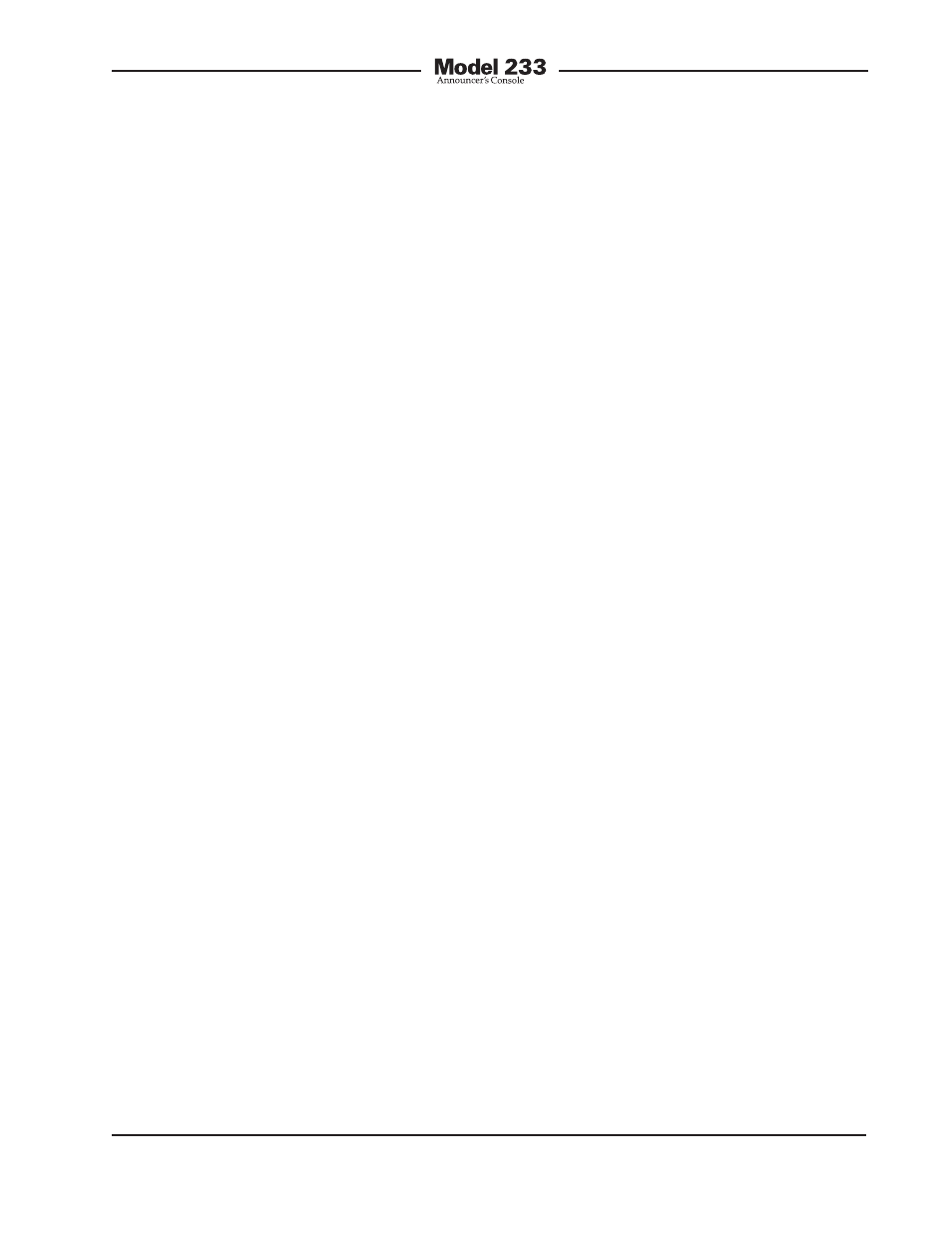Connecting an ifb circuit – Studio Technologies M233-01151 User Manual
Page 37

Model 233 User Guide
Issue 5, November 2014
Studio Technologies, Inc.
Page 37
Clear-Com systems. This was mainly pos-
sible due to the excellent dynamic-range-
control provided by the compressor circuit.
Its threshold (2 dB above Model 233 internal
nominal level) and compression ratio (5:1)
resulted in excellent talkback-to-intercom
audio. So in the end, no level or compat-
ibility switches of any kind were required
to achieve the desired “listen” and “talk”
performance.
The above paragraphs may elicit howls of
protests from a host of engineers and in-
tercom system experts. But for years we’ve
heard differing reports as to the actual nom-
inal audio levels for RTS and Clear-Com
systems. The “in-the-know cats” agreed that
RTS TW intercom (and IFB) was –10 dBu,
a value that we confirmed in our tests. But
the nominal level for Clear-Com was vari-
ously reported as –20, –15, –12, –10, and
“you know, the Clear-Com level!” It’s most
likely that early Clear-Com systems did use
a nominal level of approximately –20 dB.
But after making controlled tests, the con-
temporary Clear-Com equipment seemed
to be much closer to –10 dBu. And with
the limited dynamic-range control that we
experienced, the actual level during opera-
tion may vary widely. That’s why intercom
interface sensitivity, compatibility switches,
or rotary controls were not included in the
Model 233. But just in case a change is ever
required intercom interface gain levels are
set using several ¼-watt 1%-tolerance resis-
tors. If necessary, these can be changed by
a qualified technician.
In conclusion, the engineers at Studio
Technologies are always open to learning
more. Additional information from the field
concerning such topics as intercom system
levels, impedance matching, and DC power
sourcing would be welcomed. Stopping by
our offices for an in-person chat would be
also great. Bringing along a bit of
road “swag” would be appreciated. Just
park the production trailers in the alley
behind our warehouse—plenty of power
is available!
Connecting an IFB Circuit
A broadcast-standard “wet” (DC with au-
dio) IFB circuit can be directly connected
to the Model 233’s intercom input. Origi-
nated by sources such as the RTS 4000-
series IFB system or IFB interface devices
from Studio Technologies, the connected
IFB circuit can provide two channels of cue
audio as well as DC power to operate the
Model 233. No Model 233 talkback audio
can be effectively sent to the IFB circuit due
to its one-way nature. It’s a low-source-
impedance/high-input-impedance circuit
arrangement.
The power supplied by an IFB circuit,
normally in the range of 28 to 32 volts DC,
is usually sufficient to operate the Model
233’s circuitry. The acceptable input range
is 24 to 32 volts, with a required current of
125 milliamperes. Note that the specified
input voltage is given when measured di-
rectly at the Model 233’s IFB input connec-
tor, not at the source of the IFB circuit.
In North American field and in-studio
broadcast applications it is common to find
RTS 4000-series IFB equipment being used
to provide the IFB circuits. The Model 233
can be directly connected to, and function
correctly with, one of these circuits. For
reliable operation, especially when using
lengthy cable runs, it’s strongly recom-
mended that no other device be connected
to a 4000-series IFB circuit that is speci-
fied for connection to a Model 233. This
requirement is due to the current-limited
DC source that is supplied by the 4010 IFB
Controller.
